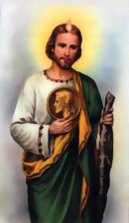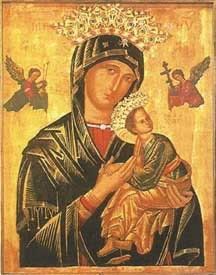Friday, June 22, 2007
MMORPGS
Those who have read my site can easily guess that I love pen and paper, people and polyhedron RPGs far more than computer RPGs. Given the choice, I'll take P&P over CRPG, whether online or off, massively multiplayer or solo. But I don't have the choice, and I feel like ruminating and offering advice on what I am able to do -- for the complete beginner, of course.
A good Player vs. Enemy (or Electronics or Mob or Monster) group will have a balanced selection of classes, each of which will fill specific roles. These are called by different names in different games, and I generally like the Archetypes in City of Heroes best, even though my MMORPGs are Dark Age of Camelot, World of Warcraft, and Ultima Online.
Tank: This indicates a class with heavy armor, lots of hit points, and the ability to generate threat (also known as drawing aggro). In DAoC (Hibernia forever!), the premier tanks are the Hibernian Hero and Champion, the Albion Armsman and Paladin, and the Midgardian Warrior. In WoW, it's the Warrior. It's my favorite in WoW. His role is to stand in front and take the beatings ... and to pull enemies away from blasters and healers.
Blaster: (aka Nuker): This is a class with light or no armor, and phenomenal damage, usually at range. In WoW, this is generally a mage, a warlock, or a shadow-spec priest; in DAoC, it's any sort of spellcaster, as well as any bow-primary class.
Controller: The problem with a large player group or party is that enemies are programmed to respond to attacks in groups. The controller prevents some of the responding enemies from attacking. Controls vary: stuns prevent all action, generally for a brief time; roots prevent enemy movement, often until taking damage; snares slow movement, and mezmerizes prevent all action until damage is taken. In DAoC, controllers are usually also the healers, and do the buff spells. In WoW, mages have a mez, a chill, and a freeze, warriors and hunters have a snare, and that's about it.
Scrapper: The scrapper is a frontline fighter, who does more damage but has less armor than the tank. If he is not pressed into service as the tank, his ideal role is finishing off other peoples' foes, or stripping attackers from blasters, controllers, and healers. In DAoC, the scrappers are the Hibernian Blademaster, the Albion Friar and Mercenary, and the Midgardian Berzerker. In WoW, there isn't quite a scrapper class; rather, it's a spec for warriors, hunters, paladins, and druids.
Stalkers: These use stealth, poisons, and two weapons. They act alone and do not fit neatly into a group role, except perhaps the scrapper's role, though they do more damage and are not so well defended. In DAoC, the stalkers are the Hibernian Nightshade, the Albion Assassin, and the Midgardian Shadowblade. In World of Warcraft, it's the Rogue.
Hybrids: Hybrids serve in two or more archetypical roles. Pet classes are almost inherently hybridized; any pet can serve as a tank. World of Warcraft's hybrids are the Hunter (elements of the blaster, the scrapper, and (through the pet) the tank); the warlock (mostly a blaster; his summoned creature orients towards either blaster, tank, or scrapper); the paladin (healer/tank); the druid (tank OR healer/blaster); and the shaman (elements of healer, blaster, and scrapper). In DAoC, hybrids are everywhere. Hibernia's hybrids are the druid (pet healer); warden (fighter /healer /buffer); ranger (blaster/stalker or else blaster/light scrapper); enchanter (pet / blaster). Albion's hybrids are the friar (healer/ scrapper), the elementalist (pet/ blaster), paladin (tank/healer -- a synergy that makes him the greatest tank in the game), the minstrel (buffer/ controller /stalker), and probably some more I don't remember. Midgard ... has a hunter, a pet/blaster hybrid, the thane (tank / blaster), and surely more, but again, I don't remember.
In World of Warcraft, my favorite is the protection warrior. This is not a popular build, but I enjoy the sheer heroic manliness of the role that the protection warrior fills. He protects everyone else as best he can, by sacrificing his own hit points and armor. Yes, he has to count on a healer to keep him alive in longer fights. But the fact is, his job is, if at all possible, to be the first to die.
As Lazarus Long accurately opined, unless "women and children first" is the sentiment at the basis of a civilization, it is suicidal. This leaves adult men to die so that others can live. That becomes the essence of manliness, which is why I find the protection warrior to be so appealing.
A good Player vs. Enemy (or Electronics or Mob or Monster) group will have a balanced selection of classes, each of which will fill specific roles. These are called by different names in different games, and I generally like the Archetypes in City of Heroes best, even though my MMORPGs are Dark Age of Camelot, World of Warcraft, and Ultima Online.
Tank: This indicates a class with heavy armor, lots of hit points, and the ability to generate threat (also known as drawing aggro). In DAoC (Hibernia forever!), the premier tanks are the Hibernian Hero and Champion, the Albion Armsman and Paladin, and the Midgardian Warrior. In WoW, it's the Warrior. It's my favorite in WoW. His role is to stand in front and take the beatings ... and to pull enemies away from blasters and healers.
Blaster: (aka Nuker): This is a class with light or no armor, and phenomenal damage, usually at range. In WoW, this is generally a mage, a warlock, or a shadow-spec priest; in DAoC, it's any sort of spellcaster, as well as any bow-primary class.
Controller: The problem with a large player group or party is that enemies are programmed to respond to attacks in groups. The controller prevents some of the responding enemies from attacking. Controls vary: stuns prevent all action, generally for a brief time; roots prevent enemy movement, often until taking damage; snares slow movement, and mezmerizes prevent all action until damage is taken. In DAoC, controllers are usually also the healers, and do the buff spells. In WoW, mages have a mez, a chill, and a freeze, warriors and hunters have a snare, and that's about it.
Scrapper: The scrapper is a frontline fighter, who does more damage but has less armor than the tank. If he is not pressed into service as the tank, his ideal role is finishing off other peoples' foes, or stripping attackers from blasters, controllers, and healers. In DAoC, the scrappers are the Hibernian Blademaster, the Albion Friar and Mercenary, and the Midgardian Berzerker. In WoW, there isn't quite a scrapper class; rather, it's a spec for warriors, hunters, paladins, and druids.
Stalkers: These use stealth, poisons, and two weapons. They act alone and do not fit neatly into a group role, except perhaps the scrapper's role, though they do more damage and are not so well defended. In DAoC, the stalkers are the Hibernian Nightshade, the Albion Assassin, and the Midgardian Shadowblade. In World of Warcraft, it's the Rogue.
Hybrids: Hybrids serve in two or more archetypical roles. Pet classes are almost inherently hybridized; any pet can serve as a tank. World of Warcraft's hybrids are the Hunter (elements of the blaster, the scrapper, and (through the pet) the tank); the warlock (mostly a blaster; his summoned creature orients towards either blaster, tank, or scrapper); the paladin (healer/tank); the druid (tank OR healer/blaster); and the shaman (elements of healer, blaster, and scrapper). In DAoC, hybrids are everywhere. Hibernia's hybrids are the druid (pet healer); warden (fighter /healer /buffer); ranger (blaster/stalker or else blaster/light scrapper); enchanter (pet / blaster). Albion's hybrids are the friar (healer/ scrapper), the elementalist (pet/ blaster), paladin (tank/healer -- a synergy that makes him the greatest tank in the game), the minstrel (buffer/ controller /stalker), and probably some more I don't remember. Midgard ... has a hunter, a pet/blaster hybrid, the thane (tank / blaster), and surely more, but again, I don't remember.
In World of Warcraft, my favorite is the protection warrior. This is not a popular build, but I enjoy the sheer heroic manliness of the role that the protection warrior fills. He protects everyone else as best he can, by sacrificing his own hit points and armor. Yes, he has to count on a healer to keep him alive in longer fights. But the fact is, his job is, if at all possible, to be the first to die.
As Lazarus Long accurately opined, unless "women and children first" is the sentiment at the basis of a civilization, it is suicidal. This leaves adult men to die so that others can live. That becomes the essence of manliness, which is why I find the protection warrior to be so appealing.
Subscribe to:
Post Comments (Atom)










No comments:
Post a Comment